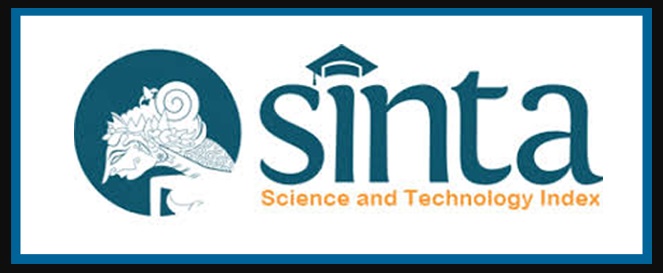Analisis Persepsi Mahasiswa Pendidikan Bahasa Jepang Universitas Negeri Semarang Terhadap Aksen Bahasa Jepang
DOI:
https://doi.org/10.23887/jpbj.v10i2.70125Keywords:
Perception , Accent, JapaneseAbstract
This study aims to determine the ability of Japanese Language Education students at Semarang State University in identifying Japanese accents. The research method used is descriptive qualitative with data sources taken from the results of respondents' answers to perception tests regarding Japanese accents. The perception test was conducted using Praat through the Listening Experiments feature using MFC (Multiple Forced Choice) to distinguish ten pairs of Japanese vocabulary that have the same sound but have different accent patterns. The results showed that the correct answers from the test results of students' perception of Japanese accents were 55.23%. This shows that students' ability to identify Japanese accents is in the poor category. In other words, students have not been able to distinguish Japanese accents, especially in two vocabularies that have the same sound. This is due to the influence of the accent of vocabulary that has been learned first and the lack of sensitivity of students to changes in the rise and fall of accent tones.
References
A. Addifa; M. Wahid; S. Rifdah. Japanese Pitch Accent Errors by Japanese Students Diponegoro University. Journal of Social Research, 1(1). 2022. https://doi.org/https://doi.org/10.55324/josr.v1i1.2
A. Chaer. Fonologi Bahasa Indonesia. Rineka Cipta. 2009.
C. Nugraheni, Bentuk Aksen Bahasa Jepang dan Penggunaanya dalam Anime. Hikari. vol. 3, no. 1, pp. 2–4, Maret, 2019.
D. Rismayanti; Y. Morita; C. Kazuhide. Ciri Khas Aksen Bahasa Jepang oleh Orang Indonesia dan Cara Pengajarannya. 2015. http://repository.unsada.ac.id/961/
E. Takahashi. Akusento gata kara Mita Gengo Akusento no Shuutoku. Kyouikugaku Kenyuu Jaanaru. 2016. https://doi.org/https://doi.org/10.20677/csssej.18.0_11
F. R. Nayoan. The perceptual Ability to Indentify Japanese Language Accent Patterns by Indonesia Learners. Japanedu., vol. 2, no. 6, 2021.
F. R. Nayoan. The Learning of Japanese Accent for Indonesian Learners: Focusing on the Verbal Accents. Proceeding of The 2nd International Conference on Japanese Studies, Language, Education (ICJSLE) 2020. pp. 146-157. 2020.
Gao, Perception of lexical tones by Swedish learners of Mandarin, 2016. https://aclanthology.org/W16-6505.pdf
H. Hernawati. Fonetik Bahasa Jepang. Bunga Rampai Linguistik Lintas Bahasa Pengantar Kajian Bahasa Asing: Perancis, Jepang dan Arab”, pp. 27-64, CV. Rizquna, 2020.
H. Yusra. Bahan Ajar Fonologi Bahasa Indonesia. Jambi, 2020, pp. 126.
H. Z. Abdussamad. Metode Penelitian Kualitatif. CV. Syakir Media Press, 2021, pp. 30.
Minematsu, dkk. Development and Evaluation of Online Infrastructure to Aid Teaching and Learning of Japanese Prosody, Trans. IEICE, Vol.E100-D no.4, pp.662-669, 2017.
N. Minematsu, dkk. Improvement of Naturalness of Learners' Spoken Japanese by Practicing with Web-based Prosodic Reading Tutor, Suzuki-kun. Proc. Speech Prosody, USA, 2016, pp. 252–256.
Marsono. Fonetik. Gadjah Mada University Press. 2016.
Muslich, Fonologi Bahasa Indonesia, Bumi Aksara, 2008, pp. 100.
P. Boersma, D. Weenink. University of Amsterdam. https://www.fon.hum.uva.nl/praat/
Qadriani & Budianingsih T, Persepsi Mahasiswa Tingkat Dasar dalam Membedakan Nada Kedua dan Ketiga Bahasa Mandarin. JURNAL Al-AZHAR INDONESIA SERI HUMANIORA, 6(1), 60, 2021. https://doi.org/10.36722/sh.v6i1.487
R. F. Akbar. Analisis Persepsi Pelajar Tingkat Menengah Pada Sekolah Tinggi Agama Islam Negeri Kudus. Edukasia: Jurnal Penelitian Pendidikan Islam., vol. 10, no. 1, pp. 194, Februari, 2015.
T. Kashima, Nihongo Kyouiku o Mezasu hito no Tame no Kiso kara Manabu Onseigaku, Tokyo: Suriieenettowaaku, 2002.
Y. Ito, Japanese EFL Learners’ Perceptions of Different Accents in Spoken English, 2019. https://files.eric.ed.gov/fulltext/EJ1244439
Downloads
Published
Issue
Section
License
Copyright (c) 2024 Jurnal Pendidikan Bahasa Jepang Undiksha

This work is licensed under a Creative Commons Attribution-ShareAlike 4.0 International License.



